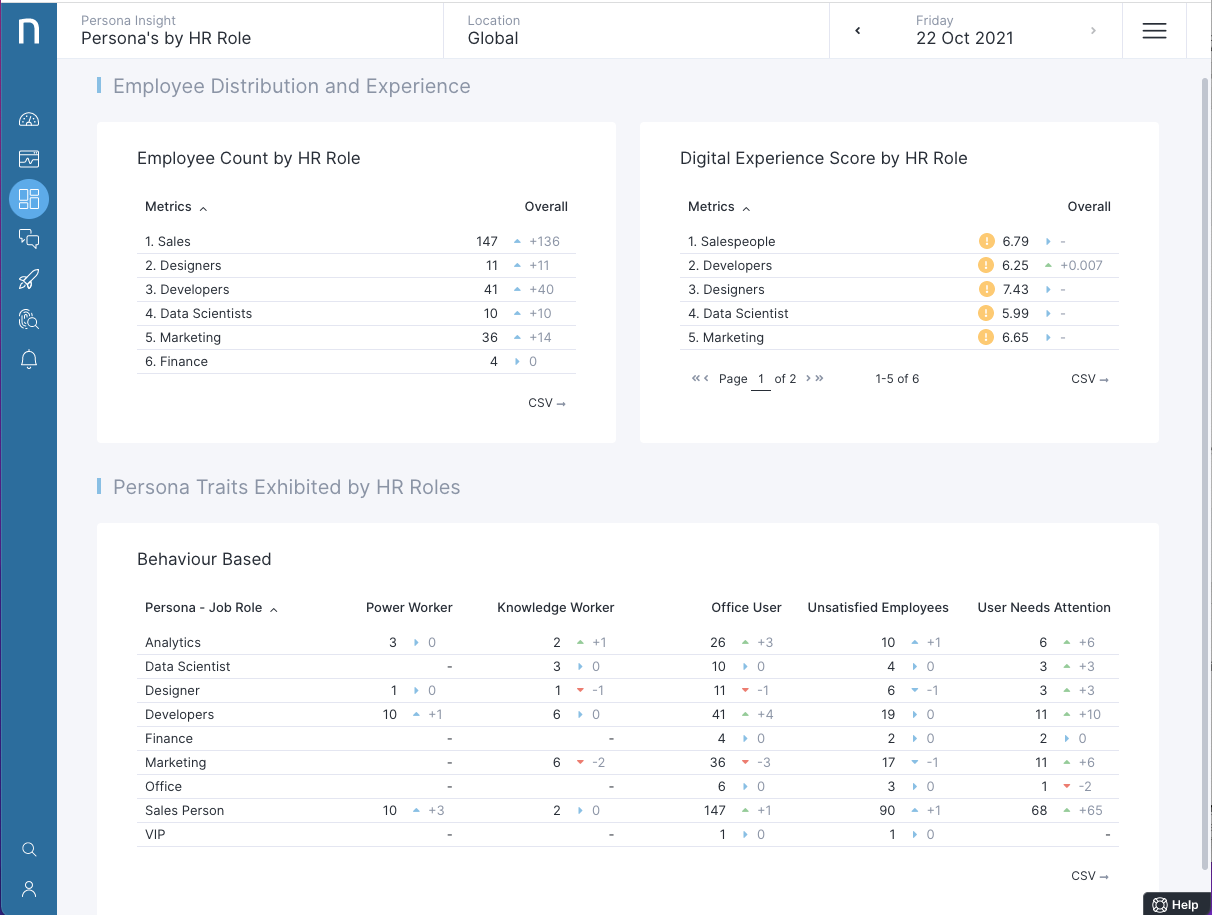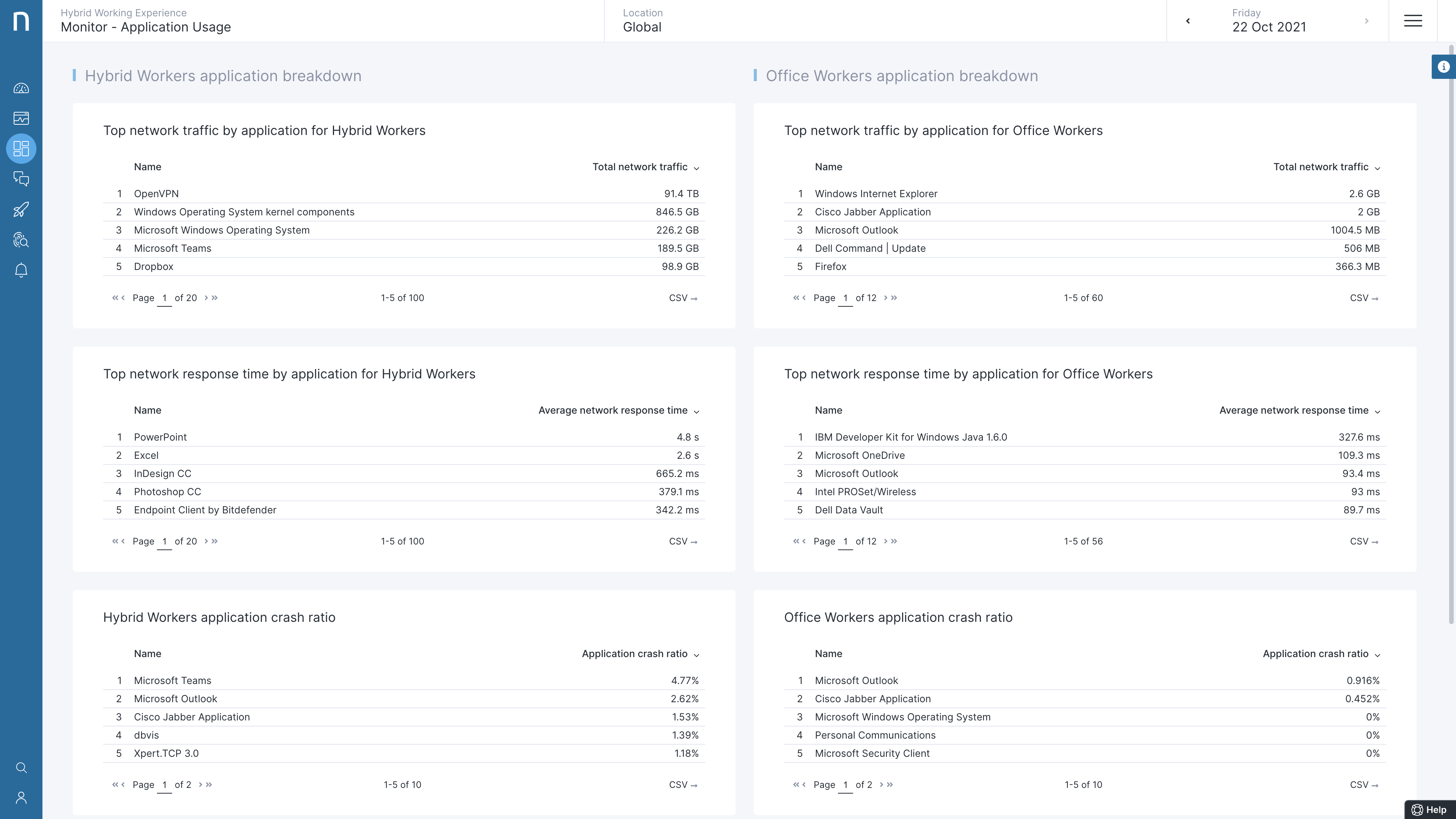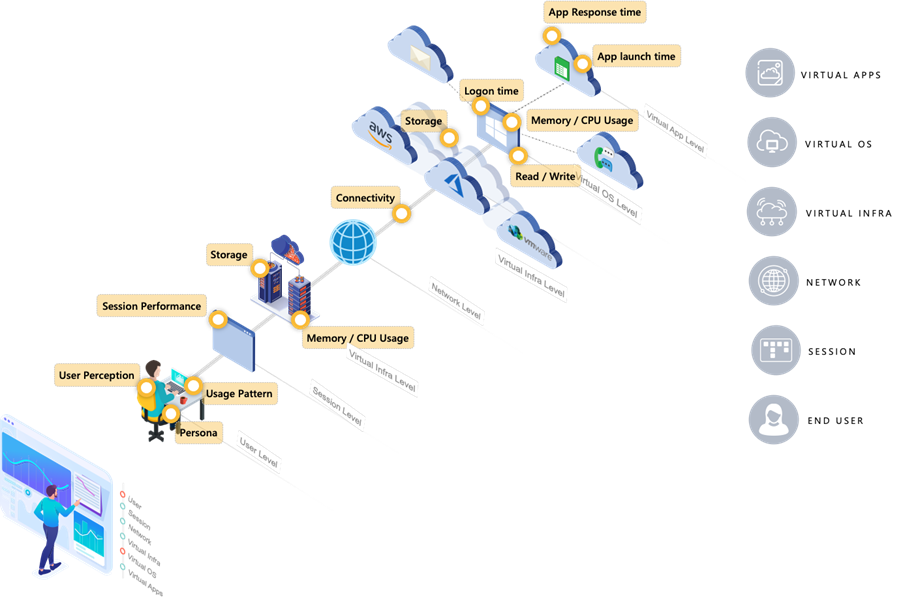DaaS (Desktop as a Service) simplifies virtual desktop and application delivery into a cloud-based subscription service that avoids the traditional complexities of on-premises VDI. As such, the potential benefits of DaaS are very attractive to IT teams that wish to establish greater control over desktops, improve security and speed-up provisioning. It’s no wonder that DaaS adoption and consideration is on the rise.
In a recent Nexthink poll of over 100 IT decision-makers, 73% were considering Desktop as a Service or had already deployed it.

As traditional office-based employees have been forced to work from home, organizations have had two options for delivering workspaces:
- provide people with a corporate Windows PC or Mac
- provide people with a virtual desktop
Organizations with existing on-premises VDI have been able to extend their environments, provided they had the budget or spare infrastructure. DaaS offers a much simpler alternative, especially for organizations new to desktop virtualization.
So if DaaS makes delivering virtual desktops super simple, why isn’t everyone doing it?
The Desktop as a Service Dilemma
DaaS providers are responsible for the availability of their service, but it’s IT teams who are responsible for defining the desktop and what applications are deployed in it. More importantly, IT are accountable for the digital experience that is delivered, but DaaS solutions do not provide any observability into this.
Here’s a direct quote from an IT leader I spoke to last week: “Microsoft are responsible for maintaining our Office365 and Azure Virtual Desktops, but when they fail or users are unable to work, I am accountable and receive a meeting request from the CEO.”
So, should IT sacrifice the flexibility and potential observability of on-premises solutions for the simplicity offered by DaaS?
Making informed decisions on the suitability of DaaS requires a deep and continuous understanding of how people work, the tools they need and the intensity of their computing requirements. Making the wrong choice ultimately leads to one or more of the following:
- frustrated employees, suffering from poorly performing desktops that have been under-provisioned
- massively over-running costs, as IT “play it safe”, over-provisioning everyone’s desktop hoping to guarantee a great experience
- excessive requests for personalization and case-by-case provisioning as employees don’t have the tools they need to work
My advice is to re-frame the problem around employees and their needs by following these steps:
1) Know Your Employees’ Workstyle
What people say they need, and what IT thinks they know about employees is not the same as the reality of how people work day-to-day. People work from different locations, at different times, with different habits, interacting with other employees on projects that require different sets of tools. Ignoring this naturally leads to employees being categorized based on static and shallow criteria such as their job role or the department they report into, and assumptions being made on their suitability for DaaS.
A European Finance company used Nexthink’s built-in persona insights to identify the best candidates for their DaaS project. The initial target for their DaaS pilot were employees with low-performance requirements, who predominantly used productivity applications. Nexthink’s Persona Insight showed that employees with these traits were in almost every department in their organization, also highlighting which employees were happy and engaged with IT.

Nexthink Persona Insight groups people based on their workstyle
2) Know Your Applications
DaaS solutions lack the configuration flexibility of on-premises VDI, forcing organizations to assign employees to one of a small number of desktop templates, each with different levels of resources assigned and associated costs. Therefore, matching every employee to the most appropriate desktop template is essential to controlling costs.
Nexthink provides a deep understanding of what applications employees are using but more importantly what apps have the most focus time, and therefore are most in use by people. Combined with understanding the peaks and trends of CPU and Memory for applications, desktop environments can be sized perfectly.
Understand the Importance of Data Locality
The responsiveness of applications is what employees really care about. For Windows applications to perform well, they should be located as close as possible to the data they use. Even if a desktop has an over-abundance of CPU and Memory, applications will lag terribly as they wait for data to be transferred.

Nexthink understands the network behaviour of applications
Data locality is not just about performance though, another consideration is cost. Egress charges are applied to data transferred between cloud desktops and are typically charged in addition to the desktop subscription cost. Therefore, applications generating high amounts of traffic can lead to high egress charges that were not budgeted for.
In the case of Flutter Entertainment Plc, a sports betting and gaming holding company, moving a subset of employees from on-premises VDI to DaaS brought data and applications closer together, drastically improving performance. Nexthink was used to monitor both environments, proving the move resulted in a positive improvement in the digital employee experience of those employees. Read the full story here: Smooth Transitions – Moving the Right Employees from On-Premises to Cloud Desktops
3) Bridge the Communication Gap
Employee acceptance is the number one reason virtual desktop projects fail. Employees can have an emotional response to major changes, with a tendency to be overly critical and resistant, but that does not mean they will report issues officially. Focusing only on ensuring desktops are performant fails to address issues such as the overall usability of the solution.
Ensuring that employees are engaged with and listened to is essential for DaaS projects to be successful. However, traditional methods of soliciting feedback that rely on email and surveys simply do not work. Whether it’s educating employees of upcoming changes or directly soliciting feedback during a pilot, identifying areas of improvement and acting upon them is essential.
A European Insurance Company used Nexthink to show that despite improved login times after moving to DaaS, employees’ primary complaints were linked to having to authenticate twice to access their desktop. During the pilot, not one employee had reported this via a service desk ticket. Thanks to Nexthink, IT were made aware of the issue, enabled single sign-on and informed employees of the change.

Nexthink ensures IT and employees are engaged
4) Continuously Assess Everything for Everyone
As employees’ roles and work styles change, every aspect of their digital requirements can change too, from the type of desktop they need to the location they work from.
As the world continues to recover from the global pandemic, employees who travel for work may begin to require offline workspaces to be productive. In this case, DaaS will not be a good option. However, the opportunity for DaaS may increase for employees returning to permanent office work.
Assessing who will benefit the most from DaaS, or in fact any mode of desktop virtualization, requires continuous assessment of every employee’s digital experience on every type of workspace, whether physical, virtual, on-premises or cloud.

Nexthink brings end-to-end VISIBILITY across your entire environment
Put Employees at the Center of Your Desktop as a Service Strategy
At the start of this blog, I mentioned the potential benefits of Desktop as a Service. You may have noticed these are all targeted at IT. The reality is that employees simply do not care about any of this detail, they just want unfettered access to what they need to do their job, and technology better not get in the way.
At Nexthink, we continue to see new customers choosing us to put employees at the centre of their decision-making across all desktop types, whether they are physical, virtual, single-session, multi-session, on-premises, or cloud.
At Nexthink we believe that everyone deserves a fantastic digital experience, regardless of how their desktop is deployed.
Learn More here, or, Contact us today!
Related posts:
- Your MS Teams Rollout Needs Specific Help—Not General Guidance
- 8 Websites Every End-User Computing Professional Needs to be Visiting Daily
- What Your IT Chatbot Can Look Like Running on Full Power
- Uncover How Your Employees Experience Their SaaS Applications in Real-Time